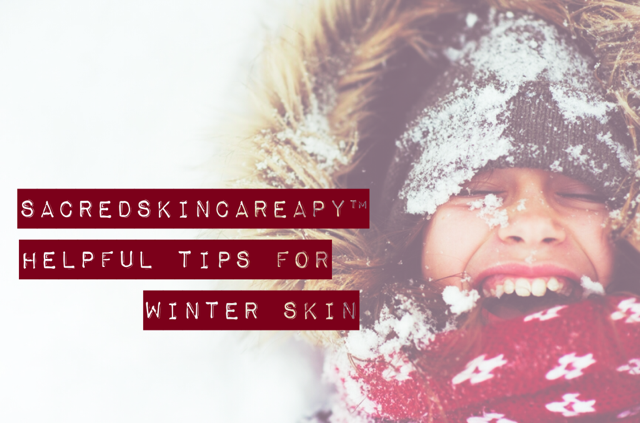As we transition into cooler weather, it’s important to make adjustments to prevent dryness and dehydration, which often leads to itchy, uncomfortable skin and winter breakouts. Following these guidelines and making little adjustments can insure your skin maintains proper moisture and enabling your barrier to remain healthy during winter months.
Dry Brushing ~ as per normal, we have a tendency to go into full hibernation mode in the winter. It gets cold! But we’re not bears. Dry brushing is beneficial all year round and especially so during winter months.
Our lymphatic system is responsible for helping to eliminate our bodies of waste and toxins. In winter months, lymph can become stifled, leaving waste and toxins to build up which can cause inflammation and/or illness. Dry brushing helps stimulate the lymphatic system to release these toxins and wastes.
Dry brushing also helps get rid of dry, dead skin cells by exfoliating. Using a brush in a circular, downward motion encourages blood flow and circulation, as dead skin cells are released. This helps your skin look and feel its best.
Get your Omega 3s ~ I’m always talking about the importance of Omega 3. In studying the skin, inflammation is the root of many ailments and issues within the body. Inflammation contributes to acne, eczema, psoriasis, and rosacea in the skin and lethargy, arthritis, digestive issues and illness in the body. Omega 3 is an essential fatty acid necessary for optimal cellular function. It works to “hydrate” our cell membranes, keeping us healthy on the inside and out. Eicosapentaenoic acid (EPA) is essential for healthy skin and hair. EPA helps regulate oil production in your skin. Having plenty of this essential fatty acid in your body keeps skin hydrated and helps prevent dryness & flaking. Great sources of Omega 3 are fatty fish like salmon, mackerel, and anchovies, flaxseed oil, hemp milk, hemp seeds, canola oil, and foods fortified with Omega 3. If you can’t seem to get enough Omega 3 in your diet look for a supplement containing EPA.
Moisturizing ~ depending on your environment, you might need to switch out your facial and body moisturizers once the air turns cooler. Warmer weather affects our oil production and as the sun sets sooner and air turns crisp, our skin needs more water binding ingredients. Glycerin is a common humectant found in moisturizers that help bind moisture. If you’re unsure of what moisturizer is best suited for your skin it’s always a good idea to ask your skin care professional.
Use a Humidifier ~ For most of us, when the temperature starts to dip lower and lower so do humidity levels in the air. Lower humidity coupled with hot, dry air blowing through central heating systems, wall heaters and even those little portable space heaters zap all the moisture out of the air. Low humidity also makes cold air seem much colder. An easy solution is investing in a humidifier. Humidifiers work by putting more moisture in the air, which helps prevent your skin from drying out.
Have a bigger place? Placing several small humidifiers throughout your home will help disperse moisture more evenly.
Warm, not hot showers ~ Another moisture zapper is taking too hot of a shower. Sure, it sounds like a great idea, especially if you feel a shiver come on when your feet meet cool tiles but extremely hot water breaks down the lipids in your skin and can compromise your skin barrier, drying you out. Take shorter showers with warm, not hot water.
SPF ~ For some, winter months mean winter sports. Skiing, snowboarding, ice skating, snowmobiles… snow glare can cause skin to burn or chap so it’s equally important to wear sunscreen in winter as it is in the summer. A broad spectrum SPF 30-35 is ideal.
What are your tips for keeping skin protected in the winter? I’d love to hear them! Reply in the comments section below.


